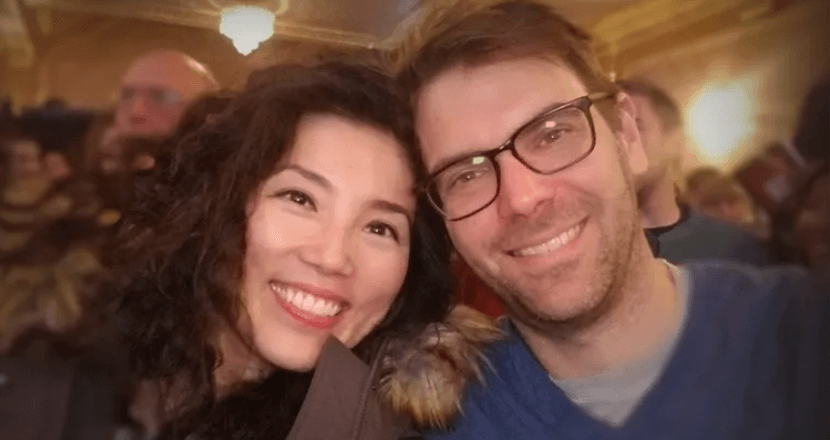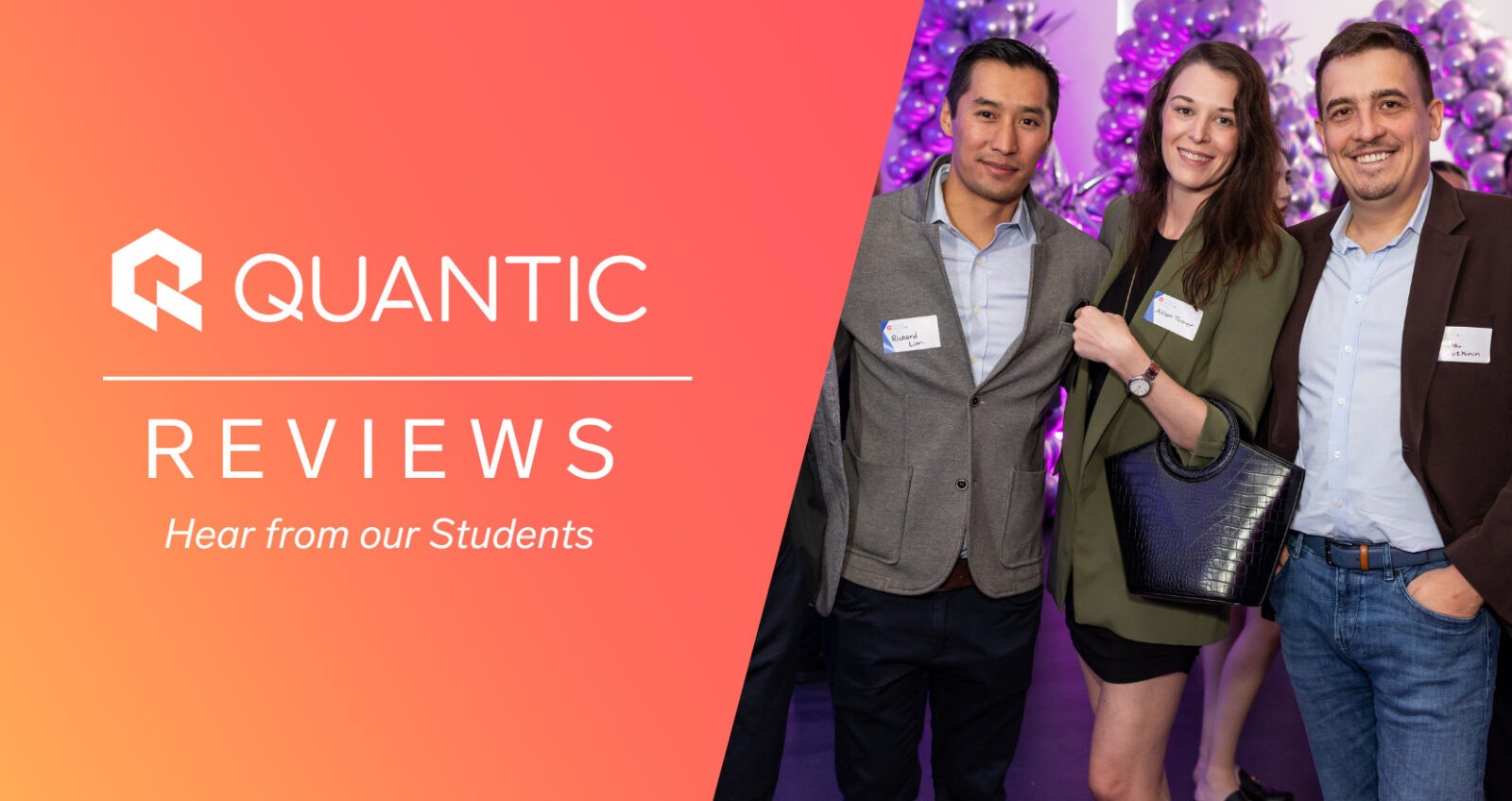STUDENT SPOTLIGHT
Quantic Student Spotlight: Ian Saville
From art teacher to Facebook partner, Ian stresses the importance of finding your “common thread”

Something that most (if not all) Quantic students have in common is the desire to learn. Students come from a wide variety of backgrounds, with interests and expertise in everything from biotechnology, investment banking, and engineering, to start-ups, non-profits, and more. Some of these students, often with an insatiable sense of curiosity, wish to earn a degree in business so that they can transition into a new field. Moving from one industry to another can be difficult, but it goes smoother with the right mindset and guidance. This is the lesson that Quantic Executive MBA student Ian Saville learned and mastered.
Ian has changed career courses multiple times. In high school, he wanted to become a priest, but was also interested in math and physics. So upon entering his freshman year in college, he was set to double major in physics and religion at The University of the South. But, ever in search of a challenge, Ian opted for a major that pushed him out of his comfort zone: art. He realized that math and physics had answers that were too defined. He was drawn to art because there aren’t right or wrong answers, and that openness left room for him to problem solve and figure things out on his own. Upon this realization, he switched majors and completed his B.A. in studio art, and then earned his M.A. in Art Education from Columbia University.
“I think a lot of art making is about problem solving, coming up with unique expressions and novel ideas to address issues,” said Ian. “It’s challenging, and I like challenges.”
Problem solving is a big deal for Ian. It is something that has guided his career, influencing the various jobs he’s pursued. After college, Ian became a middle school art teacher in New York City because he felt it would help promote kids’ ability to problem solve and think critically. While he was passionate about educating kids, he realized that being a teacher wasn’t his true calling.
Ian then went on to become a career coach. He said that he wanted to help people reach that moment where they realize their potential and what they really want to be doing. He believes that if you can think about the underlying concept of why you are passionate about something, then you can find clarity in what you want to do. While he preached this concept to others, Ian realized that he needed to do this himself.
Ian needed to make a change — a big one. The thought of moving into a new industry can be an anxiety-inducing endeavor; there’s always the risk that what you think you want to do, won’t actually pan out in reality. It’s cause for some serious self-discovery and Ian heeded the call. He decided to meet with a mentor of his to find clarity.
Ian’s mentor helped him recognize that there was one thing connecting all his jobs and interests — a desire to help people grow. Ian originally wanted to be a priest to help people, he became an art teacher to help kids, and he was a career coach to help people improve their lives. This commonality was the beacon Ian needed to figure out his next step.
“I think there’s something about career transitions and pivots where it feels really daunting, but once you understand what that common thread of your work is, it actually makes it a lot easier,” said Ian. “But you really have to do the work and reflect on it to get there.”
This realization may sound simple, but it is not easy to come to. It takes a great deal of patience and focus to truly take an objective look at yourself and figure out your strengths, weaknesses, and passions. Ian did not simply snap his fingers and figure it out.
“It took a lot of screwups,” said Ian. “I had a lot of really bad interviews in that process. It’s not like an overnight ‘aha.’”
Even though Ian had figured out what he wanted to do, he struggled to convey his industry-hopping in a way that was attractive to employers. Ian realized that he had been going about it all wrong, and that he was trying to hide and downplay his teaching experience instead of using it as a strength. He figured out that the main idea of teaching is “taking abstract concepts and turning them concrete.” By reframing his experience in this light, he discovered that his work had quite a few parallels to the tech industry.
It was in this reframing that Ian was able to land a job at Facebook, where he started as a Knowledge Manager before his current position as a Learning and Development Partner. Even at Facebook, Ian continues this idea of improving the way people figure out what’s important, out of an abundance of unnecessary junk, and builds knowledge pipelines to streamline the essential information.
“When we think about learning and development, there’s the need for learning and there’s the solution,” said Ian. “If we could reduce the amount of time between the need and the solution, then we are doing the right work.”
If you’ve been following this blog, you might sense a theme in the people we’ve profiled for Student Spotlights — they are all natural leaders. Ian is no different. In his career advising, he worked with executive-level clientele and learned a great deal about leadership. He believes that the key to being a good leader is consistency; consistent in how they delegate, ask questions, and create inclusive environments where everyone’s voice can be heard. Ian says that leaders need to think about the people they are leading and put themselves in their shoes.
“Be really empathetic to the people you are trying to empower or influence,” said Ian. “What do they want? What’s in it for them? Why should they care about your perspective?”
Ian also believes that good leaders need to be conscious of what they do and don’t know. It is important to reflect on themselves and think about where they have weaknesses and who under them has strengths in those areas.
“Great leaders have the awareness of knowing what they don’t know and can bring in others quickly to fill the gaps,” said Ian. “A bad leader is someone who holds all of the pieces to themselves and feel as though they need to be in control all of the time.”
Outside of advising others and his work at Facebook, Ian stays occupied by looking for other problems that need solving — in one instance, finding a better way for kids to learn Chinese. So, he and his wife created a children’s music book that teaches Chinese. The idea for the book came from Ian’s wife, Peipei, who was born in Shanghai. She wanted their son to learn the language but they soon realized that it was difficult to find books that teach young children Chinese. Peipei and Ian accepted the challenge and recently published the book, Bao Bao Learns Chinese.
During this process, Ian’s knack (or perhaps, penchant) for problem solving came into play when he and his wife had to figure out a business plan, despite neither of them running a business before. While Peipei was the one who actually created the book, Ian supported her with the business aspects. Even though Ian was a novice in this arena, the business parts of launching this venture went smoothly, thanks to the knowledge he gained in Quantic’s Executive MBA program. Ian said that Quantic helped with the awareness of business principles and decision making needed for the success of the book. Ian and Peipei, who works at Facebook as well, also used their combined knowledge of digital marketing to help launch the book.
Ian leveraging what he learned in Quantic to publish a book is something that reflects Quantic students as a whole — they are driven, self-motivated people who aren’t afraid to tackle new challenges. These students actively seek new opportunities, such as continued learning and switching industries, in their quest to reach their true potential. While transitioning to a new industry may seem scary and difficult, Ian’s talent for navigating complexities and the discovery of his “common thread” allowed him to find his dream job. It’s a story we can all learn from and ask ourselves as we broach any major career change — what’s my common thread?




